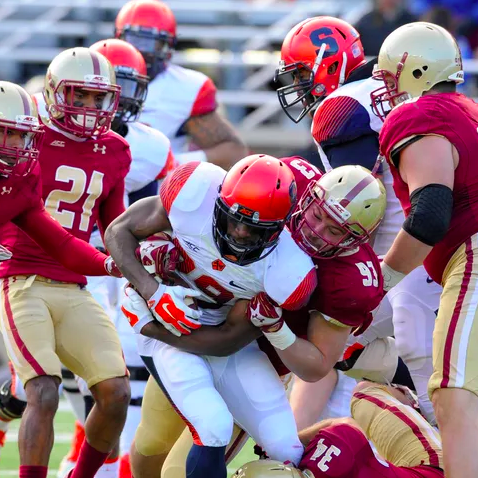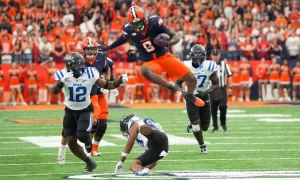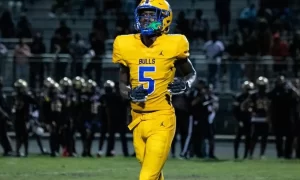Boston College hasn’t won a game against an ACC opponent in more than two years, but the Eagles are favored by 4.5 points in their game against Syracuse on Saturday. BC isn’t a cupcake, by any means — Steve Addazio’s squad is 3-3 this season — but it is an extraordinarily unbalanced team that features a strong unit on one side of the ball and a laughable group on the other.
There aren‚Äôt many positive things to say about the Boston College offense, but here‚Äôs one: at least it‚Äôs better than last year‚Äôs dumpster fire. The Eagles were hit with a tsunami of injuries in 2015, crippling a depth chart that wasn‚Äôt exactly loaded with talent in the first place. BC placed 126th out of 128 FBS teams in total offense (275.6 yards per game), and finished 3-9. This season, aided by extra experience and sheer regression to the mean, Boston College has “improved” to¬†121st (321.5 yards per game).
The Eagles’ anemic offense is buoyed by a staunch defense, which has followed a path that is the polar opposite of that taken by the other side of the ball — BC’s D was exceptional in 2015, and the unit has fended off regression to remain fantastic this season. Statistically, Boston College owned the top defense in the country last year, allowing just 254.3 yards per game. Six games into the current campaign, that ranking has fallen to No. 4, but the Eagles have actually gotten better: opponents are averaging a measly 253.0 yards against this iteration of BC’s defense.
Teams struggle to move the ball against Boston College because the unit almost always renders its opponents one-dimensional. The Eagles are extremely stout against the run — BC opponents are averaging just 3.2 yards per carry this season, the seventh-best mark in the nation. While the Boston College defense is nearly impenetrable on the ground, it’s fairly vulnerable through the air; BC ranks 58th in the country in opponent passer rating (123.91). The Eagles don’t have a swiss cheese secondary, but it’s much easier to throw than run against Boston College.
Given that dichotomy, you would expect BC’s opponents to rely heavily on the passing game, but that’s not the case. This season, the Eagles’ foes have dialed up a run on more than 57 percent of their plays, one of the nation’s highest rates. Teams throw the ball less than 24 times per game against Boston College, the seventh-lowest number in the country. (Those raw totals can sometimes be skewed by game flow — if BC is up by 28 in the fourth quarter, for example, it will be more likely to run — but the Eagles have picked up three comfortable wins, two blowout losses, and one close defeat thus far, so the numbers haven’t been artificially inflated or deflated.)
That’s a strange and nonsensical phenomenon, and the Orange should flip it in on its head in Saturday’s showdown. SU is already better through the air (346.1 passing yards per game, ninth in the country) than on the ground (134.14 rushing yards per game, 109th), and against Boston College, Dino Babers needs to pack his playbook with passes.


















